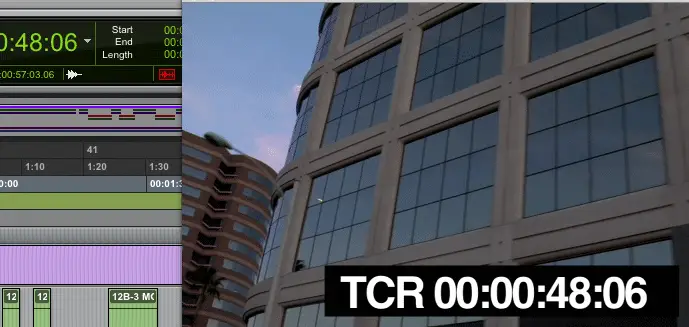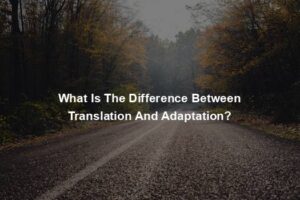
What Is The Difference Between Time-stamping, Time coding, And Spotting?
Have you ever wondered how people can note where certain scenes are in a film or a movie, and by knowing I mean from the minute, second and millisecond? Then that is exactly what we will talk about today. We will look at what we call Time-stamping, time-coding, and spotting. These words hold a very important position in audio recordings and video files. They have a very specific role in subtitling, captioning and even dubbing on a larger scale.
More times than not, if you are not a very keen person you might confuse Time stamping to Time coding and I think most times people confuse these two words because of their prefixes. Sporting confused with the two aforementioned terms.
So you might ask yourself.
- What are these?
- Who are these?
- What do they do?
- How do they make subtitling easier?
We will look at that in this article, and by the end, all of us will be on the same page. For starters, it is good to note that all these three words have similar processes but are critically different in so many ways.
Time-stamping, Time coding, and spotting are processes that involve a certain method in which include timing information on any kind of transcription of a voice-over or any other sound elements in an audio or a video file.
- The information added, and the means you add the information makes them different.
What Is Time-stamping?
Time-stamping is a process whereby one adds timing stamps or markers on a transcription to identify when a certain event occurred, depending on what exactly one is working on. These markers are what we refer to as timestamps.
- There are different ways in which we add timestamps on a transcript, it might be on an interval basis of when specific events happen on a video or audio file.
- Most times time stamps have minutes and seconds, but they can also have frames or milliseconds depending on the length of a video or audio file. Since it’s easier to understand something when you see it with your eyes, I would advise you to search for an article that shows how we do time stamping and you will have a rough idea on how to do it.
- In a simpler term, one that is more understandable by many people, we refer to timestamps as event-based to mean that we only place them where there is a specific event happening in a video or audio.
- A good example to explain event-based time-stamps is that You can find a client requesting for interval time stamps and another asking for time stamps every time one mentions a certain word on a recording or every time there is a song or a poem in an audio or a video. The most common request for time stamps usually happens when a client requests for timestamps every time there is a change in speaker in an audio or video dialogue.
- Therefore, these timestamps are event-based timestamps because they happen every time there is an event.
- It is important to note that whether the timestamps are event or interval-based; they are specific in finding and marking specific content in the source footage.
- For example, on documentaries directors write editing instructions on the time-stamped transcriptions, which editors can then use to find the footage relatively easily. The same thing with court transcriptions of testimony–lawyers can use the time-stamps to find the exact audio and video they want to play for a jury.
- Remember how when you were little you would use colored markers to mark different Bible verses for easier access that is exactly how timestamps work and in long audios or long videos it is always advisable to use timestamps to locate and navigate through the long content files to find exactly what you deem either important or useful to you.
- If you are pro in creating time stamps, then good for but timestamps are usually not very accurate they just create easier access for people to find what they need to find. Because of this, time-stamp content, interval length, and format can vary, sometimes substantially.
What Is Time-coding?
You should never confuse time code to time stamps, and since we already know what timestamps are, we will now know what time codes are in order for us not to confuse them.
Time coding is the process in which we collect specific timing information and unlike in time stamps, times code has to be very accurate. This only means that they also contain milliseconds or frames and also follow a particular format.
- As much as time codes have multiple uses, we mostly use them in creating captions and subtitles. Since they are specific and accurate with the timings, we use them where we need accurate timing information.
- Have you ever watched a video where the captions or subtitles are not accurate and instead they are completely off? Yes, that is a good example where they did not use time codes correctly, to ensure the accuracy of the subtitles and captions.
- Another good example where time codes really come in handy is during lip-sync dubbing. This being something that I work on specifically it is usually hard for sound engineers during layering of voice tracks in a different language to an original track when there are no time codes to help the voice-over artist know exactly where a spoken scene starts and where it ends. If the time codes are off the 100% guarantee, all the lip- sync will be totally off. So it is important for a time coder to be someone who is keen and practical when doing time coding.
What Is Spotting?
Spotting is the process in which we collect time-codes, to use in an already formatted file. We do specifically spotting for subtitling and captioning purposes. It’s good to note that the time codes must be in the correct format and that the concluded final time-coded file must also be in a specific format.
- How spotting works is that there are time codes for when a caption or a subtitle appears on the screen and when they disappear and they always follow a specific rule of segmentation. It breaks down voiceover transcripts into smaller sections and also adds line-breaks, which some are preferable for some languages.
- Now that we all know the differences in all the three mentioned process, I would go further and slightly mention where the confusion of the three comes in and why they should confuse you.
- As we have seen, the three processes have a lot in common from how we do them and the mere fact that their functions rotate around creating timing information for audio and video files.
- We have noticed that spotting and time coding have a correlation. Spotting is just a specific time coding, and we can say that we do time coding with spotting in mind. In fact, we almost always use time-coding and spotting are interchangeably, though spotting is more prevalent in entertainment contexts, while time-coding is more common in online and e-Learning contexts. That said, it’s still crucial to understand the difference, to avoid issues.
- Also, it’s very important to know that different timestamp formats will not work for spotting because spotting only works with a specific format for all its audio and video files. Certain system programs usually import timing lists and applying these time-stamps in spotting would not work. The same applies to PowerPoint users as they can adjust timings in the Animations panel, usually to align each one to an audio voice-over element. The issue with those time-stamps is that they’re not time-codes meaning that they’re not frame-accurate and we can’t really use them for spotting projects.
What is A Combined Continuity Spotting List?
A Combined Continuity Spotting List is highly detailed transcript of a feature film or documentary. It is merely a written reflection of everything that was shot on camera and it includes character identification, dialogue, scene description, camera moves, music cues, sound effects, time coding and more.
The only way to ensure that you use the right process according to what you want to achieve in the long run is to:
- Work with a professional service provider. There are very many service providers out there who specialize in all the three processes or either of them and by working with them, they will advise you well on which one best suits your needs.
- Be specific in the final deliverable format that you would want. This only means that you should be able to decide on what you are trying to achieve. Whether you are trying to create captions or subtitles, do you just want time stamps for specific events on the audio? When you decide what exactly it is that you would like to achieve, then it is easier to know which process to use.
- Finally deciding on how you would want to use the time codes and time stamps will also help in deciding which process to work with and which format would work well with them.








Comment (1)
Lin Mize
January 30, 2021I’m really loving the theme/design of your website. Do you ever run into any internet browser compatibility issues? A few of my blog audience have complained about my site not operating correctly in Explorer but looks great in Safari. Do you have any tips to help fix this issue?
Comments are closed.